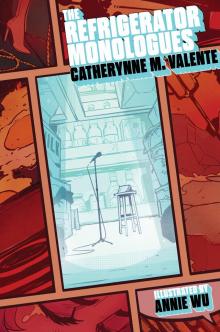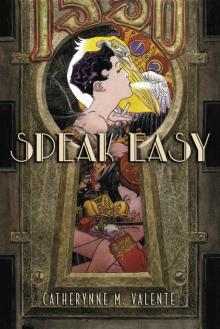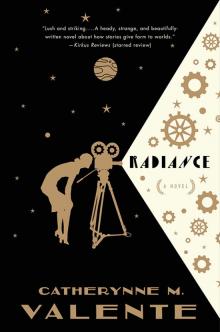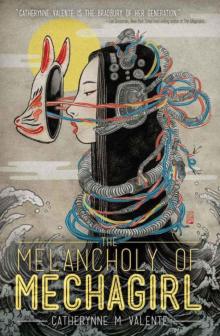


Inquisition
Green, Toby
With the moral justifications for the slave trade founded on such painfully thin ideas, the purity of the faith was particularly acute somewhere like Cape Verde. But Luis was of course up to his neck in this world, and as the 1550s progressed and he became an active player in the system, such justifications of man’s inhumanity to man doubtless appealed. They allowed wealth and power to come with the sanction of God. The ideology was winning, and in Cape Verde, where the role of the conversos in Portugal had been transferred to others, Luis felt that he was on the right side. But the ideology went with the Inquisition, and this would, in the long run, be his undoing.
TROUBLE BEGAN IN 1562. On Christmas Eve some young conversos gathered at the house of Luis’s uncle Francisco Jorge in Buguendo. They wore masks and costumes and sent word round the town for people to come and watch. Buguendo was a large African town with around forty-five resident Europeans.63 When Jorge’s house was full, a ‘very ugly’ converso called Mestre Diogo appeared. The scandal had begun.64
Diogo was dressed as a woman. Cloths were piled up on his head as if he were about to go to the well to draw water. He squatted down on his haunches on the earthen floor of the house and began to cry out that his name was Mary and that he was in the throes of labour. The farce gathered pace, with some calling out, ‘Mary’s given birth! Mary’s given birth!’ Some people asked if she had really given birth, and others replied that indeed she had, to ‘our Saviour who is going to save us’. ‘Is it a boy or a girl?’ ‘A boy, a boy!’ ‘Where did she give birth?’ ‘In Bethlehem!’ ‘No, right here in Guinea, in Buguendo’.65
Their experiences in Spain and Portugal meant that mockery of Christian doctrines was commonplace among many conversos, particularly once they escaped Iberia. Nonetheless, mockery was rarely as brazen or as provocative as this nativity scene in Buguendo, and anywhere other than Africa the conversos would have expected to pay dearly.
In addition to theological sedition, the farce of Mestre Diogo posed another challenge to the Inquisition: transvestism also broke taboos in a way which was highly threatening. Cross-dressing was a feature of life in the 16th century, and not infrequently people appeared before the Inquisition because of it. In 1581 Manoel Pires confessed in Évora that a few months before he had met a person dressed in woman’s clothes who seemed like a woman. It was dark and he did not ask too many questions, especially when she began to make advances. As they were about to make love the woman took his penis and proposed anal sex instead; it was only when Pires persisted with his original plan and she resisted strongly that he realized that the woman was in fact a man.66 As a loyal Christian Pires had come to confess, since the ‘evil sin of sodomy’ as it was known was punished by the Inquisition, in extreme cases with burning at the stake.*5
Occasionally, transvestites themselves were punished by inquisitors. In 1556, just a few years before these events in Buguendo, a slave called Antonio had arrived in the islands of the Azores from Benin, a powerful city-state in what is now Nigeria. Refusing to wear the clothes given him by his master Paulo Manriques, Antonio took to dressing like a woman, wearing a white waistcoat buttoned at the front and tightly wrapped cloths on his head. He was then placed among the female slaves, working as a prostitute called Vitoria. Antonio/Vitoria paraded making knowing winks like a woman, while removing his hat and bowing like a man. The combination was a great success, and queues of seven or eight men could sometimes be seen waiting to visit him. But the public scandal could not be contained and he was denounced to the Inquisition and shipped back from the Azores to Lisbon. Here Antonio/Vitoria informed the inquisitors that he was in fact a woman with a vagina. Antonio was inspected; no vagina was found, and he was sent to be a galley slave.67
The view which the Inquisition took of this ‘sin’ was a complex one. Homosexual sex was usually an act of mutual consent, but in Africa and the New World things were often more murky, with masters and members of religious orders frequently abusing their male slaves as soon as they had bought them.68 This did not prevent the Inquisition from seeking to try those who had been abused in this way; when an Angolan slave called Joseph was raped by his master João Carvalho de Barros in Bahia (Brazil) in 1703, he was then tried by the Inquisition, convicted, whipped and sentenced to five years in the galleys.69
In inquisitorial jurisprudence the guilt of homosexuality was shared between the partners, even if force was involved.70 People were ‘relaxed’ for being the passive partners in Valencia in 157471 and Goa in 1612.72 While active partners often received the more severe punishment, the attitudes of some in the inquisitorial hierarchy towards homosexuality is illustrated by Diego de Simancas’s views on the matter in his autobiography: ‘I was told in Rome that it was now impossible to remedy or punish the wicked sin [of sodomy] in Italy. I replied that it didn’t seem like that to me, if it was provided (and executed) that if the corrupted boy did not denounce what had happened within a day of being raped, he would be burnt for it’.73
Mestre Diogo’s performance in Buguendo was therefore doubly provocative, sexually and doctrinally. Taboos may exist to be broken, but mocking them at will is a dangerous game. The conversos thought they could get away with it in Africa, but they had reckoned without the bishop of Cape Verde, Francisco da Cruz.
Once rumours of the scandal reached Santiago, Cruz set about gathering witnesses. This was easy, as ‘many people had seen the event and all of them thought it was bad’.74 Mestre Diogo was arrested, taken by ship back to Cape Verde and thrown into the jail in Ribeira Grande. He did not even bother to deny that the event had taken place. He claimed rather that they had merely been ‘dancing’ to honour the birth of Christ.75 This was a weak excuse, and Diogo knew it. Soon enough he was on a boat back to Lisbon, where, like Antonio from Benin before him, he was locked up in the jail of the Inquisition.76
Things soon began to look bleak for Francisco Jorge and his relations. Back in Lisbon Diogo stated that it was Jorge who had called him to his house that Christmas Eve and asked the conversos if they had prepared anything for that night. He said that during the performance that had given such scandal one of those involved had been Antonio Fernandes, Jorge’s nephew (and probably a cousin of Luis).77 In Cape Verde it had also emerged that another of those involved in the show, Antonio Duarte, was also related to Jorge.78 Meanwhile, Francisco da Cruz had mentioned in his dispatch to the inquisitors in Lisbon that Jorge was himself just as suspect of Jewish rites as those mentioned in the accusations.79
While Mestre Diogo was in a very dangerous position, for Luis de Carvajal and the rest of the Jorge circle matters were not yet desperate. But Cape Verde was no longer the safe haven that it once had been. Luis left the islands in 156380 – just as the material for the trial was being put together – as did his uncle Francisco. While Jorge fled to Mexico and became a monk, Luis returned to Europe and moved to Seville.81 It was time to settle down and marry; it was time to escape the inquisitorial shadow of fear that had been following him ever since childhood.
Veracruz 1568
They sailed out on the white seas
Breaking apart a turbulent wave;
They felt the air’s stiffening breeze
Billowing out their sails concave;
The ocean was sealed with white foam,
And the ship’s prows went a-breaking
Those holy maritime waters
Which their Protean force had cut open.82
CAMÕES, THE POET OF the Portuguese discoveries, captured the elation and the terror of the seas for a whole generation. The ocean was a great horror, but also an opportunity. When things went wrong, as they frequently did, passengers had to face their ends as best they could. Robert Thomson, an English merchant from Andover, described the near shipwreck of his vessel off the Mexican coast in 1555, shortly before Luis de Carvajal returned to Iberia:
Our ship being old and weake was so tossed, that she opened at the sterne a [fathom] under water . . . and for feare of sinking we threw and lightned into the
sea all the goods we had or could come by: but that would not serve. Then we cut our maine mast and threw all our ordinance into the sea saving one piece . . . [soon] we thought there was no hope of life. And then we began to embrace one another, every man his friend, every wife her husband, and the children their fathers and mothers, committing our soules to Almighty God, thinking never to escape alive . . .83
Thomson and his fellows were rescued by a passing ship, but not everyone was so lucky. Even if the weather did not set about you, there was always the possibility that your enemies would. The traveller Jean de Léry described a French attack on a Spanish ship in 1555. The French sailors ‘did not leave a piece of biscuit or any provisions at all to the poor souls, and what was worse, destroyed their sails and stole their lifeboat . . . so that it would have been better to cast them into the deep than leave them in such a miserable state’.84
Even without pirates, voyages were painfully uncomfortable. During the rainy season sailors’ skin would seethe with boils and sores. Rainstorms would rot the ship’s biscuits. In the dry season the drinking water would fill with maggots so that people had to pinch their noses to drink it.85 It was not for nothing that the sea was often represented as Satan’s domain.86
The danger of capture by French pirates was particularly acute near the waters off Cape Verde, which Luis travelled through as he returned to Spain.87 Yet having passed through all these dangers and escaped the approaching investigations by the Inquisition into his circles in Cape Verde, Luis felt blessed. For the next few years after reaching Seville he led a life of ease.
Seville was capital of the booming trade to and from the New World, and here, in around 1566, Luis married Guiomar de Rivera. Rivera’s father was Miguel Núñez, the factor of slaves for the Portuguese crown on the Caribbean island of Santo Domingo.88 Luis had probably dealt with Núñez from Cape Verde, and the contacts of his father-in-law set him up in life. Luis soon undertook a range of tasks, from shipping wheat to taking command of a fleet off the Dutch coast in the years running up to the rebellion of the United Provinces against Spain.89 But by 1568, around five years after his return from Cape Verde, his eyes were turning towards what was now the great prize for ambitious people in the new global empire: America.
For a converso like Luis, emigration to the Indies was supposed to be impossible. In 1522 Charles V of Spain had banned the emigration of converted Muslims and Jews to the New World without his express permission.90 The decree had little effect, as the law had to be renewed in 1539, 1552, 1559 and 1566.91 Though people seeking passage to the New World were supposed to present proof that their ancestry was not tainted by Muslim or Jewish blood at the Casa de Contratación in Seville by providing certificates of ‘cleanliness’,*6 in practice they got round this through bribery and forgery.
Though ancestry could not be altered in fact, corruption could alter it in appearance. In 1591, twenty-five years after Carvajal first went to the New World, the inquisitorial official Melchior Cano*7penned a long complaint to the Inquisition of Toledo that ‘many investigations have been made here for people going to the Indies, proving that these people are clean when they are not, and even when some of them are grandchildren of people who have been burnt or punished the witnesses have sworn to the contrary’.92 Long into the 17th century the problem would continue, with members of well-known converso families like the Gramaxos of Lisbon ‘proving’ their cleanliness in the halls of power in Seville.93
Amid all these strangling regulations, the authorities also turned a blind eye to a few favourites. There were some families who were so powerful that no one dared testify against them,94 and Luis de Carvajal had maneouvred himself into just such a position. Though his uncle Duarte de Leão was coming under increasing attack, accused of smuggling and tax avoidance in places as far afield as Colombia, Mexico, Puerto Rico and Santo Domingo, Leão controlled the lucrative (for the Portuguese crown) contract for supplying slaves to the Indies through the 1560s and was difficult to touch.95 Meanwhile, the illustrious role of Luis’s father-in-law Miguel Núñez in the Spanish colonies meant that he had a secure position in Spain. The fate of his uncles and the problems of Cape Verde seemed a distant memory, and Luis was part of the emerging oligarchy of imperial trade.
So it was that in July 1568, at the age of thirty, Luis de Carvajal was invited to be an admiral in a fleet of eleven ships sailing for the New World with the new viceroy of New Spain (Mexico), Martín de Enríquez.96 He would sail without his wife, Guiomar, something common for men trying to make their fortunes in America at this time. These expeditions were ostentatious affairs, the flagships replete with insignias of office and ornate chests containing royal orders. The decks heaved with ambition, vanity and anticipation. Carvajal’s arrival in such a fleet meant that he would be instantly guaranteed an illustrious position in the New World that most conversos could not imagine for themselves.
Nevertheless, Carvajal’s position brought its own pressures too. As the fleet reached the first Caribbean islands and made for Veracruz on the coast of Mexico, three ragged ships were sighted off the coast of Jamaica. The ships turned tail, and Carvajal ordered that they give chase. They turned out to be English pirate ships which had been illegally trading in hides, and Carvajal sent the men and their cargoes to the Spanish governor.97 But soon even greater adventures were at hand: arriving at Veracruz, it was discovered that the English adventurer John Hawkins had taken control of its port and was fortifying it against the viceroy’s fleet. The empire was being challenged by upstarts from its own backyard.
VERACRUZ WAS a beautiful place. Situated on a river a few miles inland from the Atlantic coast, it was surrounded by forest and orchards of orange, lemon and guava trees. The arbours teemed with parrots, some of them with tails as big as pheasants.98 The town itself had about 300 households. A humid, tropical settlement, in the years before Carvajal arrived it ate up the lives of many of those who arrived there. Usually these were people who did not look after themselves, and ‘would commonly go in the Sunne in the heat of the day, & did eat fruit of the countrey with much disorder, and especially gave themselves to womens company at their first coming; whereupon they were cast into a burning ague [malaria], of the which few escaped’.99 By the 1560s, however, people were only living in Veracruz from the end of August to April, retiring to the lush green hills around Jalapa for the rainy season.100
Veracruz was served by the port of San Juan de Ulúa, about twenty miles down the coast.*8 The beach between the two was littered with mighty trees, roots and all, uprooted by hurricanes in Florida and washed down the Gulf of Mexico.101 San Juan itself was a fortified island sheltering a good harbour where ships tied up and 150 African slaves helped to maintain the facility.102 It was this port that Hawkins had captured and which would now lead to Carvajal’s first showdown in Mexico.
This was Hawkins’s third visit to the Caribbean. He was a successful privateer largely because his bravado and audacity outstripped his integrity. His usual practice had been to seize slaves in Africa by burning a village here and there, and then trade them in the Caribbean for gold and sugar, claiming to the local authorities that he had to sell the slaves in order to repair his ship after storm damage.103 If this third voyage was unusual, it was only because this time he had bought the slaves rather than kidnapping them.104
While the Portuguese and Spanish authorities deeply resented Hawkins’s intrusion on their domains, local plantation owners and prospectors had less trouble squaring their consciences; African slaves were in high demand for the mines and plantations. On this third visit Hawkins had merrily cut deals with the local authorities in Santa Marta and Cartagena on the Colombian coast, selling slaves and commandeering provisions from farms but leaving some cloth as a sort of payment.105 He had begun his return trip to England on 8 August 1568, with unsold slaves, gold, silver and pearls stowed aboard his flagship, the Jesus of Lubeck. On 12 August, however, a violent hurricane had lashed the ship between Florida and the tip of Cuba, an
d Hawkins had been forced to return for repairs. En route he had taken three Spanish ships, and placed them at the head of his fleet to make them look like the new viceroy’s flotilla. Arriving at San Juan de Ulúa, Hawkins had been told by the captured Spanish pilots to respond in kind to the firing of a salute so that the ruse was not given away. A welcome party of small sailing ships and boats put out into the harbour, and was staggered to find Hawkins the pirate sailing towards them and taking control of one of the two most important ports in the whole of America.106
This was on 16 September, and the fleet carrying Enríquez and Carvajal arrived the following day. There followed a week of tense negotiations over the windswept island. Hawkins wanted to repair his fleet at minimum cost and demanded the right to trade, something considered illegal by the Spanish. Viceroy Enríquez pretended to agree, and then reneged at the first opportunity, routing Hawkins and his fleet comprehensively so that the only pirate leaders to escape were he and Francis Drake. But the two were separated, and Hawkins was forced to cram all the survivors on board his one remaining ship, HMS Minion, to attempt the 3,000-mile voyage home.107
Soon it became clear that there were not enough provisions to go round. On 8 October the ship touched land near Tampico, 200 miles north of Veracruz. Many of the sailors, realizing that if they all stayed they would end by eating one another, asked to be set ashore to try their luck among the Amerindians. Hawkins agreed, but as the men were about to leave the Minion, wrote one of them, Miles Philips, ‘it was a world to see how suddenly mens minds were altered’. They all begged to stay. Hawkins would have none of it, and they were forced overboard in stormy seas amid a ‘pitifull mone’. When one of the rowing boats could not make land amid the high waves, the bosun John Sanders threw the castaways out into the sea and they swam to shore, two of them drowning.














